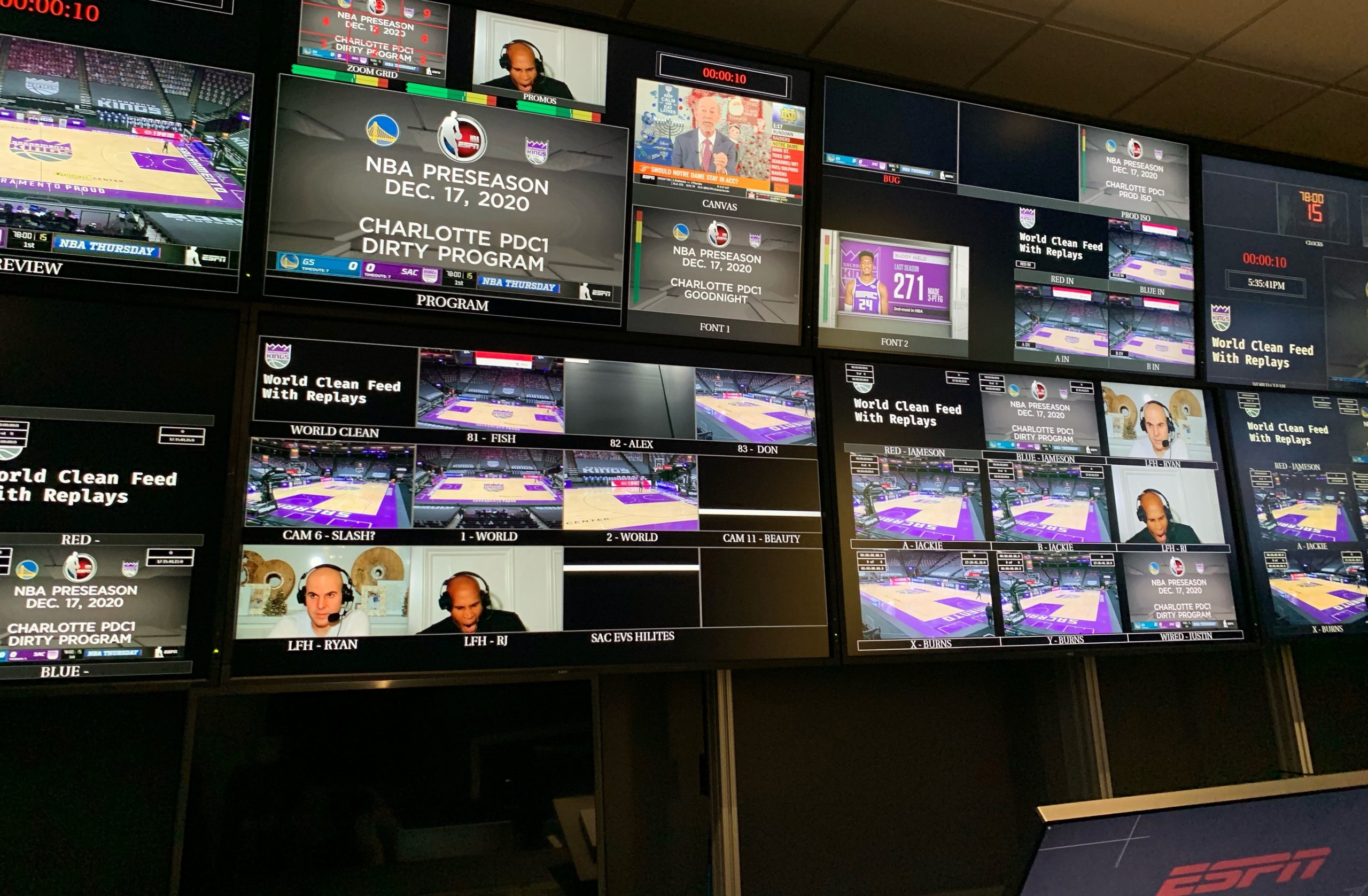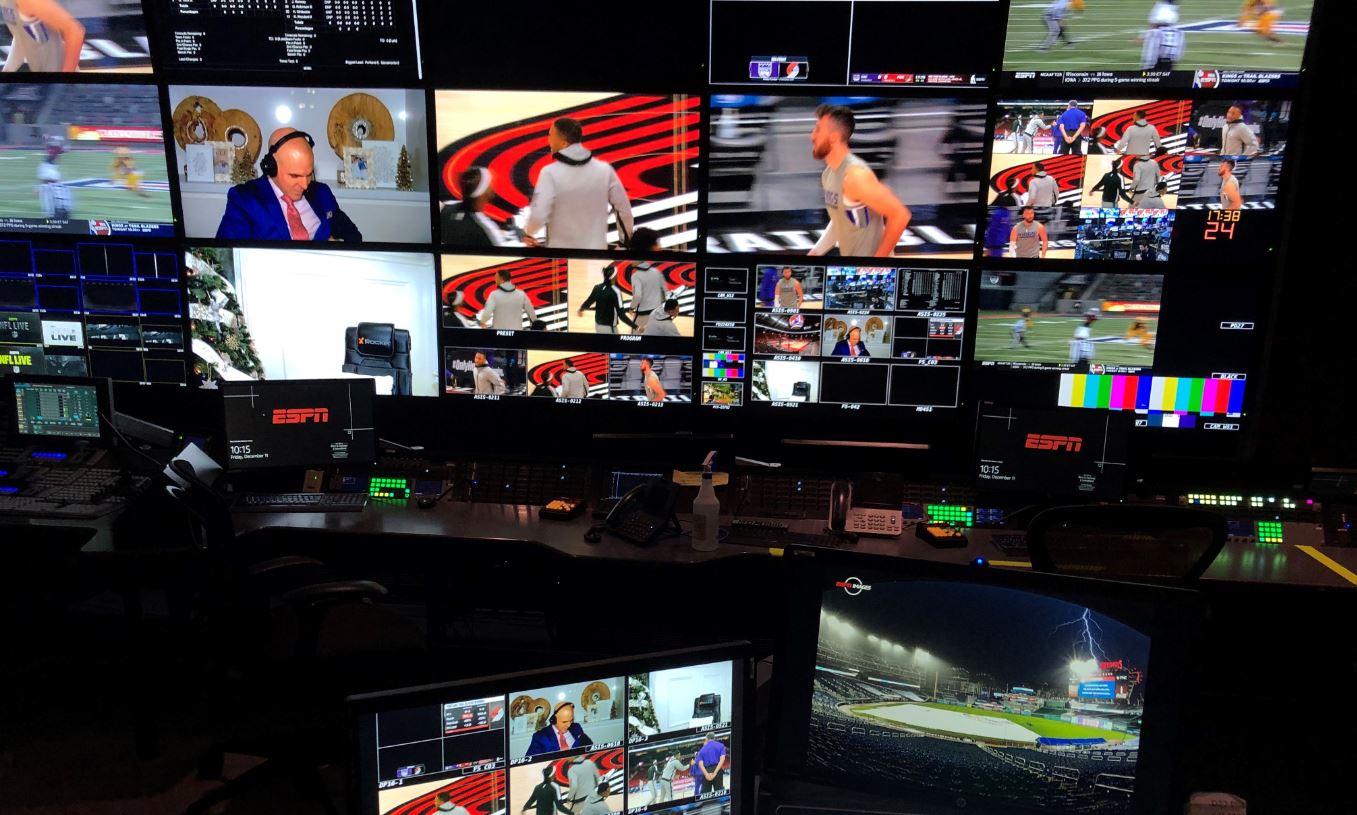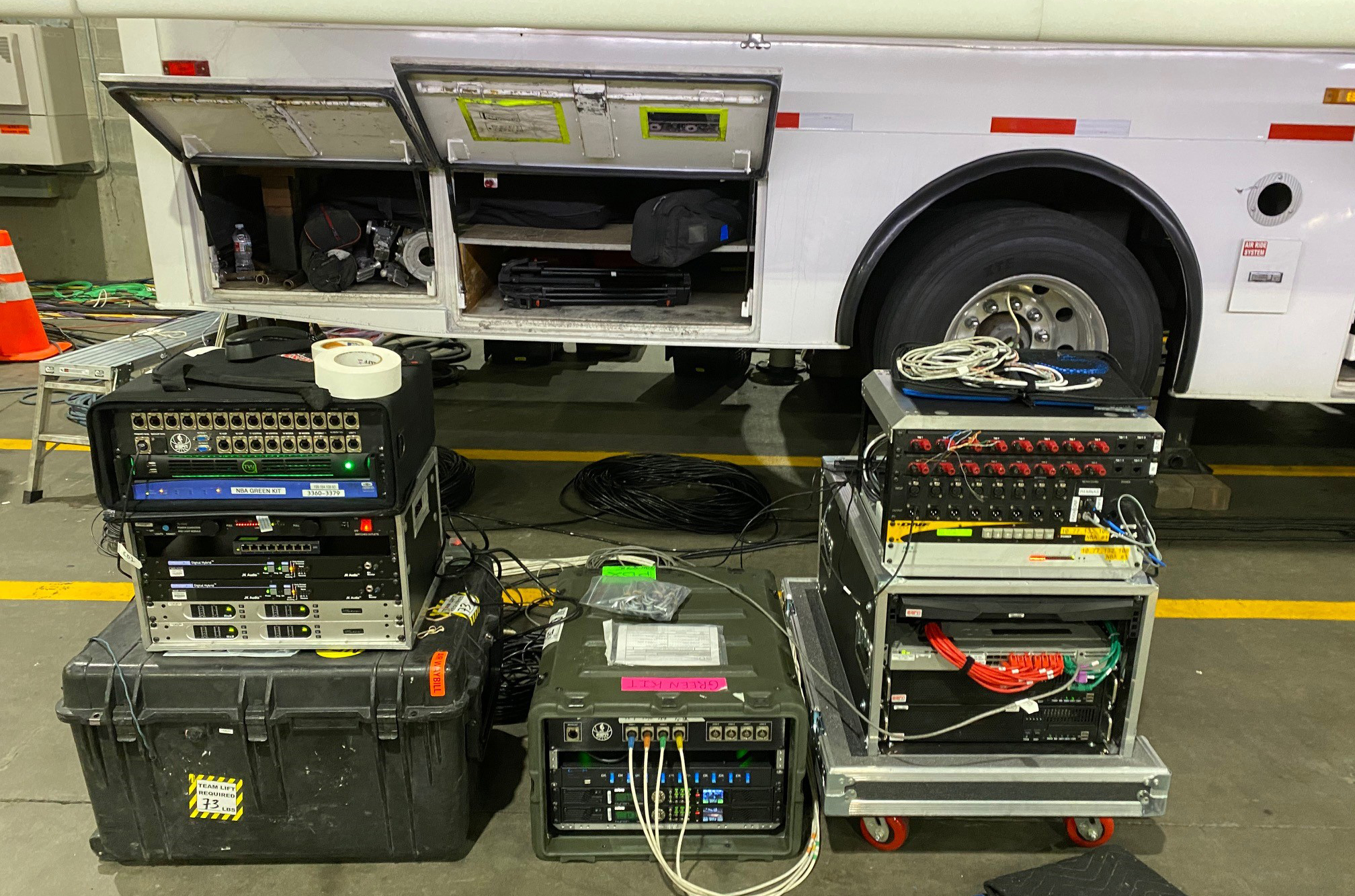NBA 2020 Tipoff: ESPN Plans 50-50 Split Between Onsite and REMI Game Productions
The broadcaster had a short lead-time to prep for the 2020-21 season
Story Highlights
It has been just 73 days since the Los Angeles Lakers wrapped up their 17th NBA Championship, but ESPN’s production and operations teams are already back in action, tipping off their 2020-21 season tonight and then delivering a star-studded five-game slate on Christmas Day. Typically, broadcasters have more than twice that amount of off-season time to prepare for the NBA season, but there is nothing typical about this year. And ESPN will begin the season with roughly a 50-50 split between onsite and REMI (remote integration) productions – with plenty of room to stay nimble in the coming months.
“If things dramatically change and we need to scale back on doing games in a traditional manner with a truck at site, then we will,” says Michael Shiffman, VP, Production, ESPN. “The optimism is, things go in the other direction. And, obviously with vaccines starting, who knows what the second half of the schedule will look like in terms of that split. One thing we do know is, with the benefit of our colleagues on other sports and our very talented health and safety team, we have the safety precautions in place to make sure people who will be traveling can do so in the safest way possible.”
Trucks, Announcers To Be Onsite for Top Games
ESPN plans to roll up a truck and locate announcers onsite for all games airing on ABC, ESPN-exclusive broadcasts, and some higher-profile games. The network will rely on its GREMI-plus-four production model, in which graphics and scorebug operators and four EVS replay operators are located in a control room in ESPN’s Bristol, CT, or Charlotte, NC, facility. This setup is similar to its pre-pandemic NBA productions, which have been leveraging some form of the GREMI model for three years.
The announce position for broadcasters will be situated roughly 30 ft. back and 15 ft. up — similar to where they were in the Orlando bubble — at center court. The announcers will be 6 ft. apart with plexiglass separating them and in front of them.
ESPN and other broadcasters have collaborated with the league and teams to institute and enforce onsite health and safety protocols. These include separating crew and personnel by color-coded zones (those within 30 ft. of the field of play are in the red zone; most others are in the yellow zone). Although the NBA is not requiring testing for those in the yellow zone, ESPN is testing all crew members prior to traveling and working a game (including local crew). In some cases, the TV compound was located in the red zone, and so trucks have been relocated within the arena.
“That’s the plan as we know it today. Having health and safety as a top priority, we believe this is the safest way to accomplish our goals right now,” says Patty Mattero, senior operations manager, ESPN. “Our announcers, robotics operators, and reporter will be in the yellow zone, along with the majority of the rest of the crew, as we try to keep as many people as possible out of that red zone and ensure the health and safety of everyone.”
Although booking mobile units and crews remains a work in progress because each city offers different challenges depending on the COVID-19 protocols, she notes, NEP EN3 and Game Creek Video Victory will serve as ESPN’s primary mobile units this season (Game Creek Yogi will be onsite until Victory becomes available in January). In terms of crewing, Mattero says, ESPN will look to limit travel and deploy local pros whenever possible.
“We need to think outside the box and be smart and be realistic and in a pandemic environment,” she says. “On our production and operation assignments, we are first and foremost trying to regionalize and cut back on travel [to avoid] traveling people from East Coast to West Coast just because we have done it in the past. Our production teams and technicians are all capable of teaming up with other teams, so we are trying to keep people more regionalized and take advantage of good locals in those areas so that we can cut back on putting people on planes.”
Enhanced–World-Feed Productions To Leverage RSN-Produced Clean Feeds
All other games will be REMI-based “enhanced–world-feed” (EWF) productions using one of two models. In each model, announcers will call the action remotely via “Live From Home” kits.
“Turnkey productions” will feature the home-team RSN’s clean feed and enhance the show with three dedicated ESPN-controlled cameras (two hards and a handheld) and custom-built enhanced–world-feed kits to provide comms, tallies, GPI control to ESPN’s production team in Bristol or Charlotte.
In cases when an RSN’s resources are maxed out and its truck is not capable of supporting the EWF, ESPN will pull up its own truck and provide its own three cameras to enhance the RSN’s world feed. ESPN deployed this model for a preseason broadcast in Los Angeles last Sunday and will continue to do so when the turnkey method is not possible.
“We have the two enhanced–world-feed models right now, and turnkey is what we would like to do as much as possible. But, when we’re not able to get that support onsite, we will bring in our own truck and do a REMI model using facilities in Bristol or Charlotte,” says Mattero. “We’ve already done several of both of these types of productions [during preseason] and are really trying to take what little time we have before we launch for Christmas to test out our models and to improve as we go.”
Camera Complement: Mixing in Additions From Orlando ‘Bubble’
The camera complement for GREMI games will continue to evolve as the season progresses, but the initial plan is to deploy eight manned cameras plus several robotics and Marshall POVs for back-of-house coverage. ESPN will bring back popular elements from the Orlando bubble like the extended foul-line robos and RailCam system (currently installed at Staples Center and Barclays Center for Lakers and Nets broadcasts, respectively) when possible.
“We’re definitely hoping for the same look and high level of production that [our viewers] are accustomed to,” says Mattero. “We’re still planning on having our traditional handheld cameras courtside for under the baskets and midcourt as the NBA allows, but we also want to continue some of the added robotics that we had in the bubble, where we had to be a little more creative, especially on the ABC games.”
Jumping Out of the Gate: Christmas Comes Early for ESPN

ESPN is deploying control rooms in both Bristol, CT, and Charlotte, NC, for its enhanced–world-feed productions.
Traditionally, ESPN has a full offseason and several weeks of regular season to ramp up to their lineup of games on Christmas Day. However, this year, the operations team was forced to sprint through a shortened offseason and will have just one game – Mavericks-Suns tonight in Phoenix – to prepare for the league’s annual coming-out party on Christmas.
“By the time we wrapped up [the bubble],” says Mattero, “we barely caught our breath and dove right in [to plans for the 2020-21 season]. We were able to pivot and collaborate as a team to figure out how are we going to confront these challenges and how we could conquer the technical side. We would simply not be able to pull this off if we didn’t have this amazingly dedicated operations team, as well as the producers, specialists, and in-house ESPN staff. It just wouldn’t be possible.”


